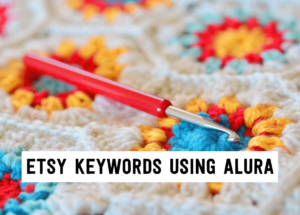
How to find the best Etsy keywords in 3 simple steps using Alura
If you want to be found in search results on Etsy, you need to optimize your product listing for SEO. And if you want to
join
join
Selling on Etsy can be a really good option for many handmade sellers, but as those of you know who sell on it, it can be a bit of a love-hate relationship at times!
Sometimes you love it because there are a lot of very appealing things about selling on Etsy. But there are also times you might get angry at it, because as with any option there are definitely some drawbacks to it as well. . .
. . . and you may not realize the full impact of those drawbacks until after you’ve opened your shop.
Which is why I made this article— to give you my honest thoughts on what things are great about Etsy, and what’s maybe not so great, or that at least you might need to have in mind before you open your shop so that you go in with the full picture and can decide if it’s right for you.
So, ready? Let’s dive in.
So before we dive into the main content, I want to make sure you know that (of course) I can’t possibly cover ALL the pros and ALL the cons in one article. . . because there are many, many, many little things that Etsy does really well. And there are many, many, many tiny little things that can be a little annoying at times.
So I’m going to focus instead, on the big things, the things that I’m seeing have the biggest impact, the ones that are the most important.
And it’s totally fine if you disagree with some of them: this is just what I think and see from my experience working with makers who sell on Etsy.
I don’t want this article to sway you one way or another. I think Etsy is fabulous for many reasons and can work wonders for some, but I also don’t think it’s the only way to sell handmade products successfully.
At the end of the day I want YOU to find what’s best for you – be it Etsy or not!
Where you sell doesn’t matter to me, what matters is that you make sales and have a successful handmade business! For some that plan includes Etsy, for others it doesn’t. That’s all good, there is no right or wrong.
So now that we’ve cleared that up, let’s move on to our discussion of the pros and cons of Etsy!

FREE WORKBOOKS, CHEAT SHEETS, AND RESOURCES TO HELP YOU START, GROW AND PROFIT FROM YOUR HANDMADE BUSINESS.
When you look at the pros and cons, it’s not about how many pros there are or how many cons there are . . . because some of these pros are really valuable pros that could be great for your business — and some of the cons might be smaller but they are very specific things you may not like.
So you just need to look at each one separately and determine how valuable the pros are to your business, and if any of the cons would be something that might be a problem for you or just aren’t a good match for you or your business.
Let’s start by talking about some of the pros of selling on Etsy.
The first pro – and it’s a big one – is how easy Etsy is to set up and maintain. It’s basically like three “pros” under one umbrella, because it lowers the work you need to do in 3 areas:
Even with the lowest tech skills, you can get set up on Etsy really quickly.
Now of course this doesn’t mean there is no work to do. You still have to create your products, take pictures and write your product descriptions and all of that. But in terms of the actual setup, they make it really easy.
I really want to emphasize this because I don’t think that people realize how easy Etsy makes things until you try and set up your own website.
Now setting up your own website is not impossible. And actually, with today’s tools and website builders, it can be fairly easy to do even if you don’t have really high tech skills, but it does involve a lot more work up front that you absolutely get to skip with Etsy.
Etsy takes care of absolutely everything so you don’t have to remember to do this or that to your website each week or each month in order to keep it running smoothly.
This can be a big bonus if technical know-how isn’t your thing.
The next pro Etsy has to offer is an established audience of built-in visitors.
According to Statista.com, in 2020 Etsy had 81.9 million active buyers – up from 46.3 million in 2019 (!).
81.9 million is huge – that means that your products could be put in front of a LOT of potential customers who are searching for products that you might be selling.
So that’s clearly a very significant advantage that you need to consider.
N.B.: In the video above, I say “81.9 billion per month” 🤦♀️ – this is clearly an error as there wouldn’t be enough people in our galaxy to make it happen! I am sorry and would like to please blame it on my pregnant brain at the time of the recording 🐣.
When you start your own website, you have to establish trust with potential buyers: they don’t know if you’re an upstanding business or a shady fly-by-night website — so you have to prove yourself over time.
If you sell on Etsy, you immediately gain that trust, because Etsy is a trusted brand. People know that Etsy will take care of them if they purchase products on the website.
The fourth pro I want to talk about is the fact that Etsy has an established payment system.
This saves you a lot of headache because you don’t have to worry about setting up payment processing systems and figuring out how to use them and process credit card payments from customers safely, it’s all done for you.
Next I want to talk about seller education and support. This one is slightly controversial and some might disagree here – and that’s OK – but I do think that Etsy is actually putting a fair bit of effort into educating their sellers and supporting them.
It may not be perfect; for example you may find a help article is not as in-depth as you would want to or you can’t figure out how to do something that you want to do on the platform . . .
. . . but for the most part I think Etsy puts a lot of effort into educating sellers and helping them set up their stores
And if you actually look at our other marketplaces in the handmade industry and compare, Etsy has a lot of information out there to help you make the most out of your Etsy shop.
In addition to seller education, Etsy has also developed a good community you can go to for help, such as Etsy forums and Etsy coaches – and this is our 6th Etsy pro.
In addition to Etsy forums, there is also an enormous community outside of Etsy, including businesses (like mine – wink wink!) that help you use Etsy effectively.
So when you sell on Etsy you will find a lot of education, content, and advice online – a lot more than you would if you were to sell on a much smaller marketplace.
So those are the most important pros I see for makers who sell on Etsy. Now let’s take a look at some of the “cons” that you might encounter.
The first thing I want to talk about is loyalty; specifically that if you sell on Etsy you aren’t developing loyalty to your business as much as you are developing loyalty to Etsy.
For example, when someone buys a cute little pillow from your Etsy store, and someone visits their house and says “Oh, that’s a really cute pillow – where did you get that from?”
The person who bought your pillow is very likely to say “I bought this on Etsy” not “I bought this at the xyz shop.”
They might not even remember the name of your shop, because in their head they bought it on Etsy.
This can mean less customer loyalty for you, fewer referrals, fewer repeat customers – I think you can see what I mean.
Now there is definitely stuff you can do to counteract that and to build your brand, such as working to build your email list and using smart packaging that wows people and has your brand and logo all over it.
It will be harder to build things like an email list, but you can absolutely still do it. Just be aware that it’s a little trickier than if you had your own website and it’s definitely a slower process than if you had your own website.
To develop packaging that helps create more brand awareness, I have a great article and free download that can help you design packaging that builds brand awareness that you will want to read after this one.
So in summary, you want to be aware that the customer loyalty developed on this platform is to Etsy and not necessarily to your business, which can make things like getting return customers and getting referrals via word of mouth a little bit harder.
The next pro on Etsy is increased competition.
As we talked about above, there are lots of customers on Etsy – which is great – but there are many many many sellers also.
Gone are the days where you would just put something up on Etsy and get sales immediately because there were only a few other sellers selling products similar to yours.
These days, most niches are crowded, and there’s competition – high competition – in almost every niche. And so that is something that you need to keep in mind because it definitely makes it harder to stand out and to rely solely on Etsy to bring traffic to your store. You have to work at it too, which is actually point #3…
Now let’s talk about marketing expectations on Etsy.
I think that there are still too many people who open a store on Etsy thinking that listing the products will be almost enough just by itself to get sales and to get views of your product.
That is absolutely not true.
There is work involved; you will absolutely need to do marketing work to get noticed on the platform, and outside the platform as well.
This means utilizing Etsy SEO optimization techniques to actually get your products noticed of course, which takes work and patience (I’ll talk about this a little more in a second actually), BUT ALSO outside marketing efforts to bring people from outside of Etsy to visit your Etsy store.
This is something that oftentimes you don’t realize until your shop is open, and I am talking about it in this article so that you are aware of it before you open your shop and can factor that into your decision of where to open your shop.
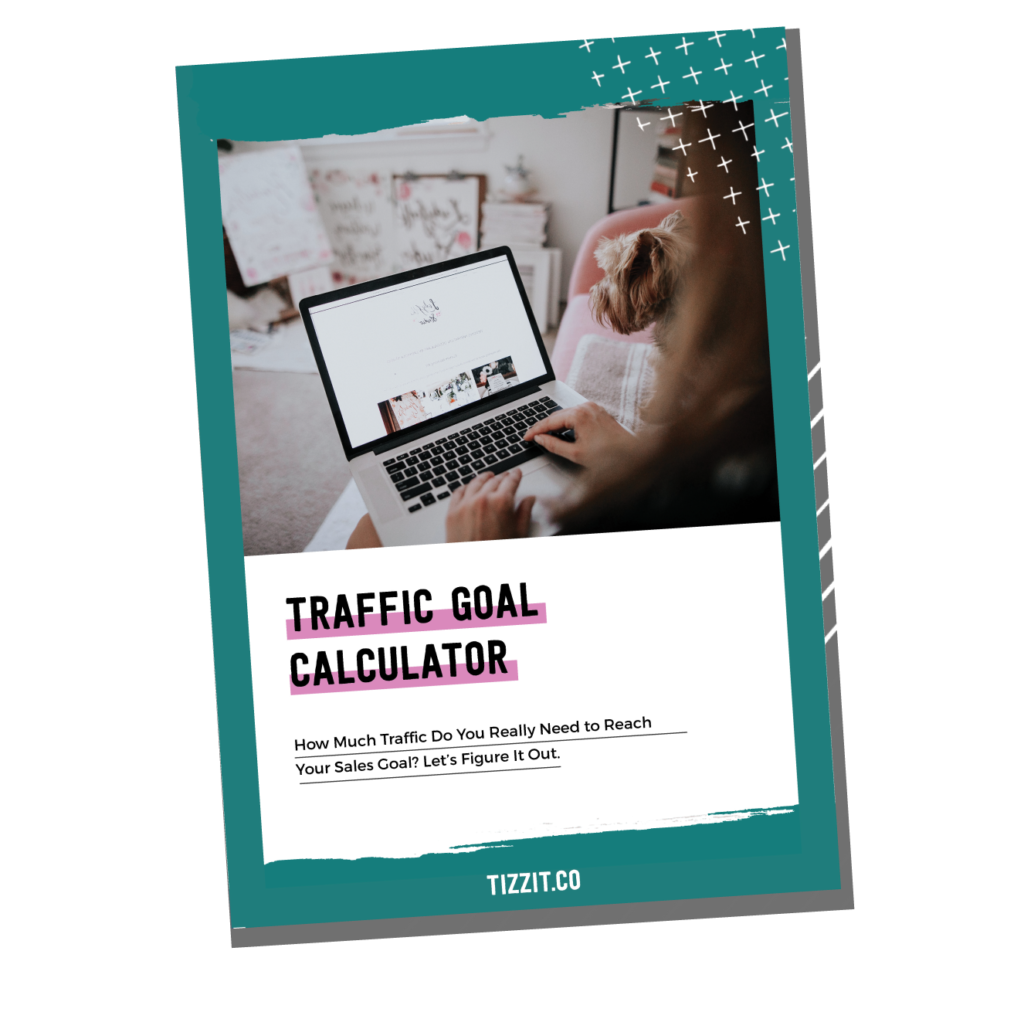
[free] handmade shop traffic calculator
HOW MUCH TRAFFIC DO YOU REALLY NEED TO GET TO YOUR HANDMADE SHOP TO REACH YOUR SALES GOAL?
USE THIS CALCULATOR TO FIND OUT!
So I just mentioned SEO, let’s talk about it!
Number 4 is another item that many makers don’t realize until after they open their Etsy shop – but is actually very important to know before you choose your selling platform.
It’s about SEO expectations.
First, it is knowing that you need to do SEO, and second, you need to understand that SEO is hard work and there are never any guarantees.
The truth here is that there’s no point in selling on Etsy if you’re not going to utilize all the visitors and buyers that come to the platform by optimizing your shop and doing SEO. And it will take a good bit of work!
So you need to understand that SEO is really crucial to being successful.
At the same time, you need to realize that doing SEO isn’t a guarantee — even the best SEO in the world is not a guarantee for success on the Etsy platform alone.
You may have the best of SEO . . . and optimize your listing as best as possible. But you are also in a niche with sellers who are also optimizing their SEO as best as possible so you’re still competing with a lot of them.
This means that you will still need to bring in your own traffic from outside of Etsy — so that you’re not relying just on Etsy SEO to bring you views.
So essentially what I am saying here is Etsy won’t be a platform where you can just list your product and people will come and buy it – even if you have excellent SEO – some shops do rely on Etsy SEO only and do well but
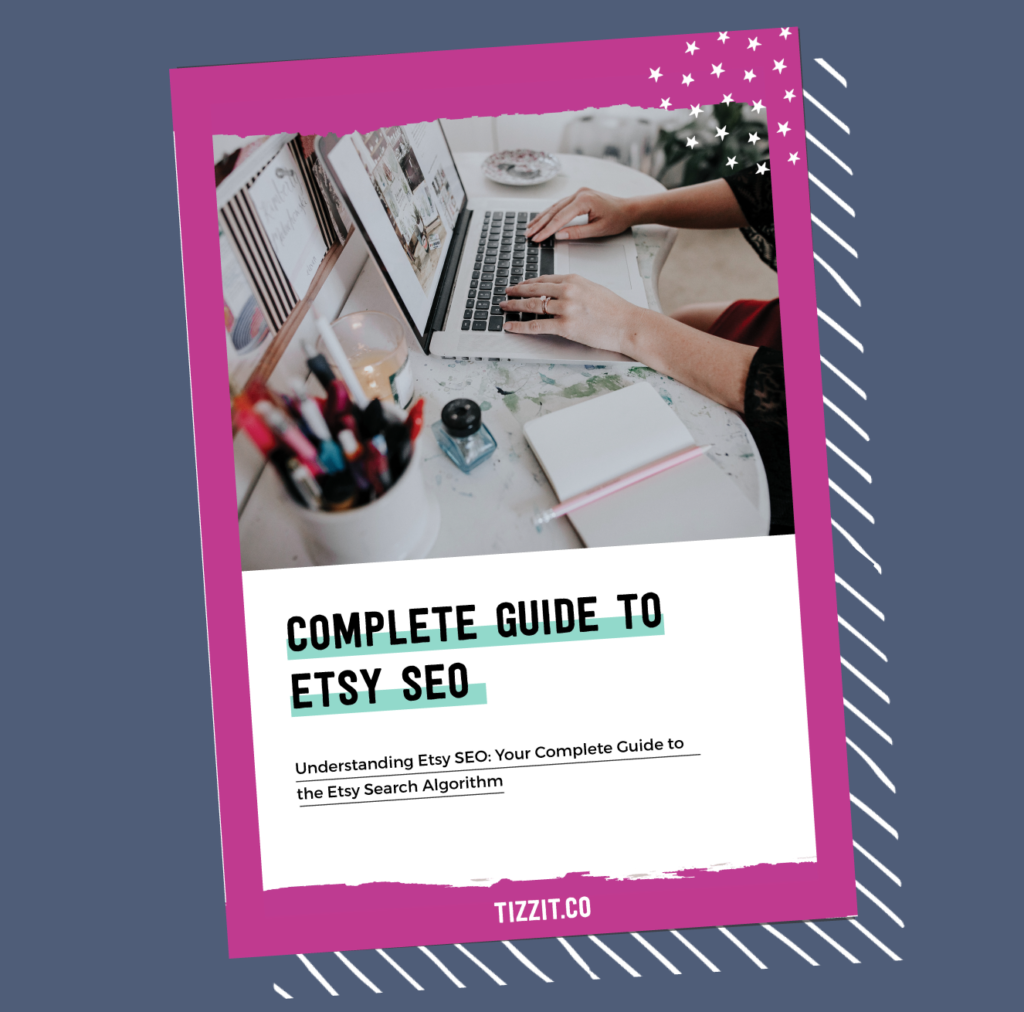
Grab this free ETSY SEO GUIDE!
a complete guide to Understanding how etsy search (and ranking) actually works so you can make the most of it and get more views on your products.
The next point I want to discuss is fees.
Etsy creates a lot of business opportunities for handmade businesses . . . but they aren’t free!
They have listing fees, shipping fees, transaction fees, pattern fees, advertising fees . . . I’m not going to name them all here but you get the gist – there are a lot of fees!
I’m not saying the fees are unreasonable – you’re paying for the services that Etsy gives you – but it does come at a cost so you need to absolutely keep that in mind.
I recommend calculating what your fees would be to see how much of your profit margin the fees would eat up. . . doing this before you choose a platform is key because you know if the platform will allow you to make the profit you need, and will also help you develop your pricing strategy.
Handmade . . . what does it mean on Etsy?
The truth is, handmade on Etsy can be a bit of a broad definition.
The actual definition from their terms of service is:
“Handmade items are items that are made and/or designed by you, the seller.”
So you can make the item, or just design it and have a production partner help you create the product.
Now I’m not going to enter a controversial debate here as to what should be considered handmade and what shouldn’t, and what should be sold on Etsy and what shouldn’t, because we’d be here for hours!
The point I want to make here is that on Etsy, you will find some very clearly handmade items and some others that are not entirely handmade.
For example, you can have one seller that makes mugs out of clay, glazes them with beautiful colors, and fires them in the kiln. They sell these mugs for a premium price, because they take a lot of time to make, plus materials and supplies.
Another seller is a graphic artist that creates many designs, and buyers can choose from the designs the one they like and when they do the seller gets them printed-on-demand, so here the seller is an artist and created the art of the mug but doesn’t actually make the mug itself. That part of the product creation is being outsourced. Often, these mugs sell for much less, because their costs are much less.
And mug shoppers might opt for the lower price mug, which can leave the mug ceramist feeling frustrated.
Some makers don’t mind this scenario, and feel like each mug seller will have a different audience (which is TRUE, the customer looking to buy a ceramic mug is very different than the one looking for a printed-in mug), but for others it’s a very controversial topic because one is 100% handmade and the other isn’t.
Then there’s the issue of sellers who might not even be designing the graphics or make the artwork and outsource that part as well … and we’re entering very muddy waters here as to what’s handmade and what’s not.
The reality is that some shoppers come to Etsy for Handmade – but sadly … others just come for a bargain, more than to support small or buy handmade goods.
Point number seven is what I call “the price downward spiral”.
This is something that’s not discussed enough, and I think is a big issue for a lot of sellers on Etsy.
Here is what happens: when there is a lot of competition, the first thing that the majority of people do to compete is drop their prices.
Soon everyone is trying to out-compete the others by lowering their prices too, and it quickly becomes a race to the bottom where nobody is making any money on their products.
There is a lot of this happening in a lot of niches on Etsy, but not all of them. There are of course some shops who are able to sell very successfully with very high profit margins. And that’s wonderful.
But be aware of that and check what’s happening in your niche because it can be hard to compete if this is going on.
Do a little bit of research, look at what’s happening in your niche and in your market. And if you’re happy with the prices that you’re seeing there… then great! . . .
But if you find prices that make you realize it’s not going to fit your pricing strategy and profit goals for you to be on Etsy and you decide to sell outside of Etsy, that’s cool too.
You can of course sell your products at the price they’re *actually* worth on Etsy even if your competitors are underpricing their items severely but keep in mind that it means you will need to do an even better job at making your shop stand out, offering unique products, creating a stellar brand experience and using perceived value to sell your products.
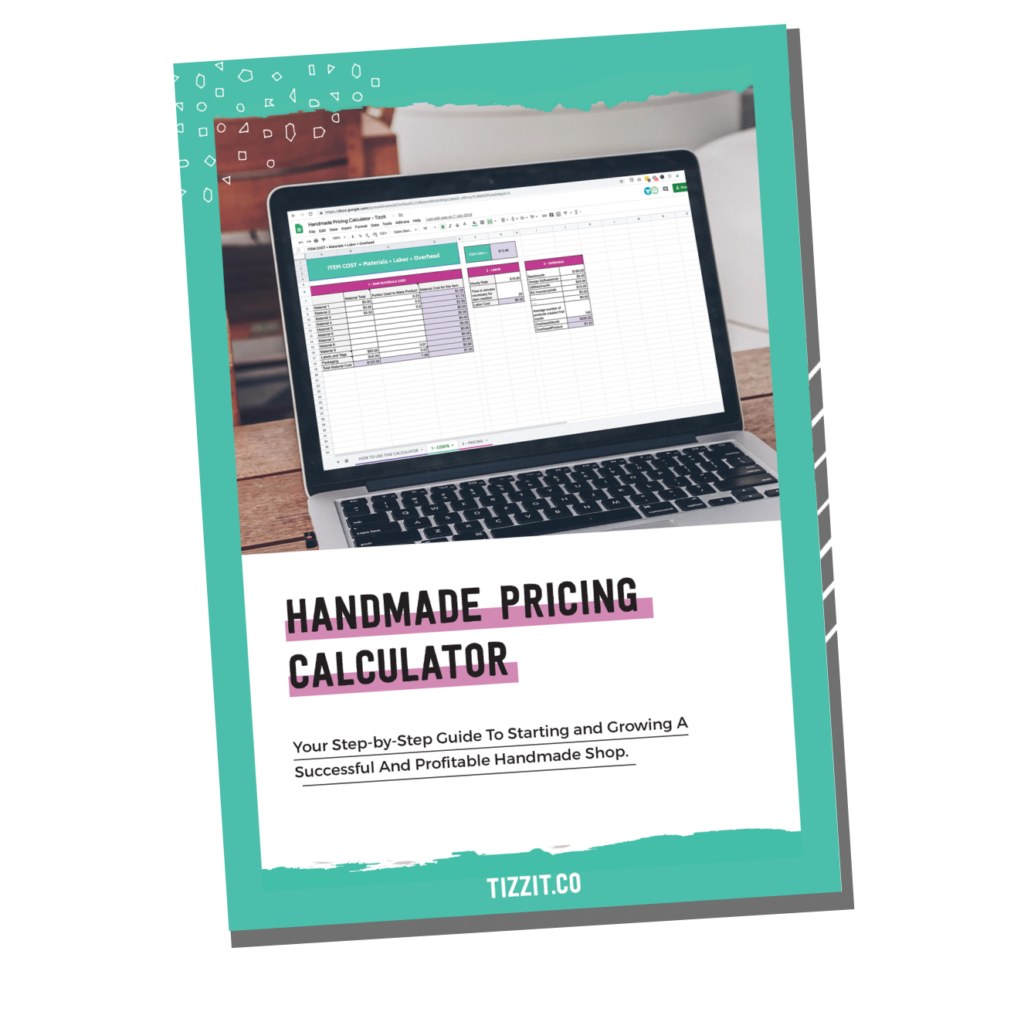
Grab this free handmade pricing calculator!
use this “done for you” handmade pricing calculator to know exactly how much you should charge for your products.
The last point I want to talk about is lack of control.
You don’t make the terms and conditions. You don’t decide on the fees. You don’t decide on the features. You don’t decide on the layout.
You just go with what they think is best. Now you have to trust that they have your interests at heart because if you make sales, they make sales. But at the end of the day, it’s their business – but in recent years there has been a lot of debate and controversy around whether their interests are still aligned with small handmade shops’ interests, or with bigger sellers and retailers on the platform.
The fact is, they go the direction they want to go, they make the changes that they want to make, and if they want to change the rules they get to do that.
Then you get to decide whether you’re happy with that change of rules or if you want to go and sell somewhere else.
But you have to accept the fact that there is a certain lack of control to selling on Etsy, because ultimately it’s their business and they make the rules. They can, like they have recently … increase fees, make paid ad programs compulsory, encourage free shipping very strongly, create a Star Seller program, and you have to abide by it if you sell on their platform.
So there are a lot of things to think about obviously when you are looking at a platform like Etsy and deciding if it’s the right one for your handmade business.
And after looking at the pros and cons I don’t want to leave you thinking about Etsy in terms of good or bad, I want you to appreciate its pros and its cons and look at them in terms of if it’s the right place to sell your products.
Etsy is wonderful— I see so many makers that I work with have great success on the platform. It’s an absolutely beautiful way to get started very easily, very quickly on a marketplace that is dedicated to the type of products that you are most likely selling.
And so there are great advantages to selling on the platform, I just want you to know that no platform is ever perfect. And that’s true for Etsy.
And if you go into it knowing what the cons are as well, you’ll feel a bit more prepared to handle them.
I have a few more articles that will help you decide where you want to sell your handmade products:
If you want to learn more about other platforms options to see which might be the best fit for your craft business, you will want to read my article Where to sell crafts online.
But if your mind is already made up and you are thinking “Etsy is the perfect platform for my handmade business!” then you will want to read What to do and in exactly what order to start and grow a successful handmade or Etsy shop.
Thanks for reading and until next time, au revoir!
you might also like…
related articles

If you want to be found in search results on Etsy, you need to optimize your product listing for SEO. And if you want to
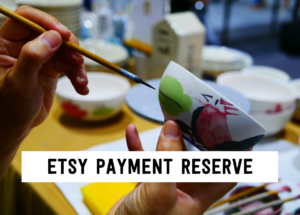
There has been a lot of talk in the Etsy community — and I mean A LOT of talk — about Etsy’s payment account reserve
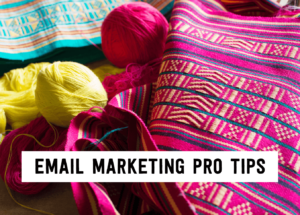
Anyone who knows me knows that I am a HUGE advocate for using email marketing to grow and scale your handmade business. But you may
disclaimer
subscribe to youtube
THE LAUNCHPAD
get in touch
We acknowledge and give thanks to the Budawang and Yuin people, the Traditional Owners of the land we work and live on. We pay our respects to all Aboriginal and Torres Strait Islander Peoples and elders past, present and emerging.
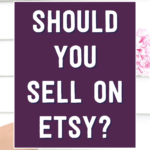
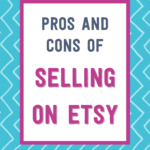

Get Instant Access to
The traffic calculator

Get Instant Access to
The FULL Resource library

Get Instant Access to this
complete etsy seo guide

Get Instant Access to The pricing calculator
I am personally disgusted with Etsy. Their customer service is shameful. I am a small business in Canada. I make under 30k sales a year, therefore I don’t have the right to charge my customers tax, nor can I claim a refund when doing my taxes every year. Etsy insists on charging GST, HST regardless to buyers. Claiming that they are obliged to do so as per Government of Canada but completely ignore the fact that this applies only to sellers making over 30k annually. I have contacted them twice and chatted with representatives that cannot help and advising me that the entire conversation has been recorded and someone from Etsy will reach out to me. It has been over a month and no one has contacted me, nor do I expect they will. They just keep grabbing fees after fees. I will be moving my shop elsewhere where my customers will not be obliged to pay the illegal taxes Etsy is literally Stealing from them in order to bump up their total fee % they collect on the Total sale.
Hello Martha! Sorry to hear you’re having trouble with Etsy customer service! In our experience, they will eventually get back to all inquiries. And based on their investors reports*, their customer service department should be making some improvements soon 🤞 In the meantime, this issue would be best directed to a tax lawyer in your region.
I hear that. I hired a marketing agent to do the Etsy store. Advertisements and SEO, etc. Etsy could not get the store to work, yet charged me fees. After 5 months, the shop finally came online. And they have suspended it after making just 40 sales. No answers, no contact, just “Not selling.” Avoid. After the cost of having a professional storefront created, marketing, etc., etc., I am down nearly $700. And after just $110 in sales, they shut it down. No reason. BUT.. still charging me fees.
Thank you for sharing your experience with Etsy, William! We’re sorry to hear that you had to go through that. We hope you’re still working on your shop elsewhere!